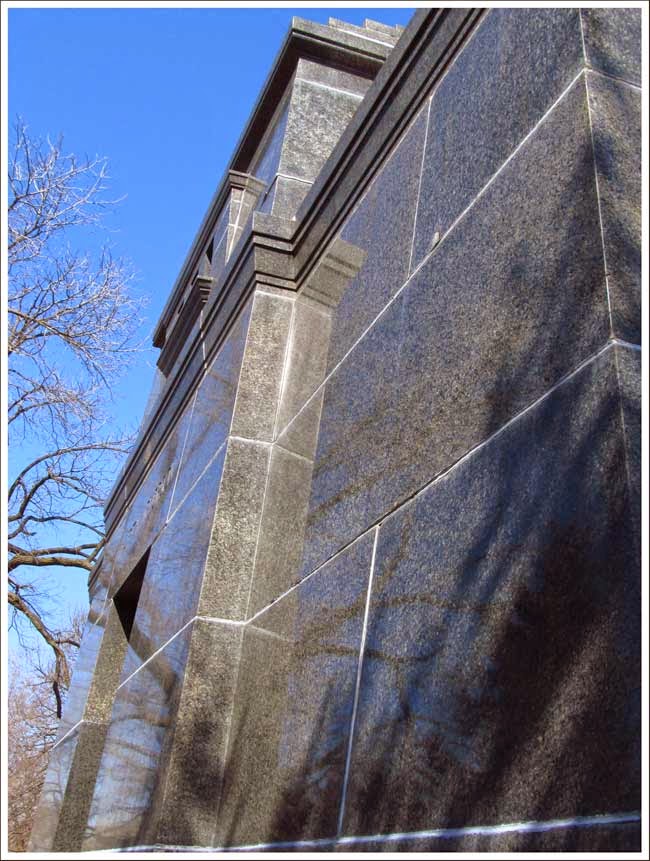Martin Ryerson Mausoleum
by: chicago designslinger
[Martin Ryerson Mausoleum (1887-90) Louis Sullivan, architect /Image & Artwork: chicago designslinger]
Martin Ryerson died suddenly while on a trip to Boston in 1887. The Chicago lumber merchant and real estate mogul hadn't been feeling well, but his death took everyone by surprise. His wife accompanied the body back home, and his funeral was attended by a who's who of prominent people from the governor of Illinois to pallbearer Marshall Field. He was laid to rest in Graceland Cemetery, the burial place of choice for the city's elite.
[Martin Ryerson Mausoleum, Graceland Cemetery, 4001 N. Clark Street, Chicago /Image & Artwork: chicago designslinger]
In his will Ryerson had bequeathed $8,000 to the Graceland Company and stipulated that the interest income be used to pay for the family resting place's ornamentation and perpetual care. After his father's September burial Martin Antoine Ryerson went to see architect Louis Sullivan. The firm of Adler and Sullivan had designed a number of buildings for Ryerson, and Martin A. asked Sullivan to design a new mausoleum more befitting of his father's achievements. Sixteen-year-old Martin Ryerson had left his parent's home in New Jersey in 1834, walked to Muskegan, Michigan, became a fur trader, married a Native American woman, had a daughter, got into the lumber business, and by the time he turned thirty-three, was a millionaire.
[Martin Ryerson Mausoleum, National Register of Historic Places, Chicago /Image & Artwork: chicago designslinger]
The architectural monuments that you see clustered around Graceland's millionaires row today didn't exist when Sullivan's monument for Martin Ryerson began to be assembled in 1890. The tomb was indicative of Sullivan's search for new forms and massing in architecture. He had been incorporating stylized Egyptian motifs into some of his early decorative motifs and the Ryerson mausoleum elevated that interest to a new level. He let the structure speak for itself. He stripped the surface clean, polished the granite to a sheen, and kept the minimal amount of decorative detail simple. The place that the Ryerson family called their final home was an elegantly refined and sophisticated expression of architectural achievement.
[Martin Ryerson Mausoleum, Chicago /Image & Artwork: chicago designslinger]
When Ryerson's body was moved to its new resting place, the remains of his daughter Mary went with him. She'd died in 1888 at the age of 45, and was followed by her step-mother, and Martin A.'s mother Mary, in 1907. Martin Antoine joined his parents in Sullivan's masterpiece in 1932, and his wife Carrie Hutchinson Ryerson completed the family unit in 1937. Upon her death, the massive Ryerson art collection went to the Art Institute of Chicago, including works of Impressionist art by Cassatt, Cezanne, Degas, Gauguin, Monet, Renoir, and a Rembrandt.




No comments:
Post a Comment
Note: Only a member of this blog may post a comment.